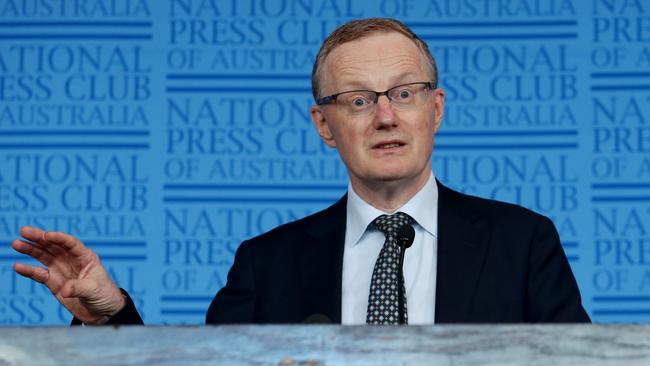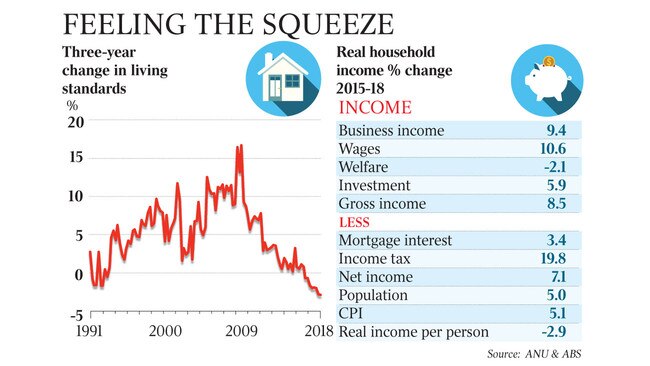Australians’ incomes lagging rise in cost of living
Living costs in Australia have outstripped household incomes by 2.9 per cent over the past three years.

Living costs outstripped household incomes by 2.9 per cent over the past three years as weak wage growth and fast-rising taxes delivered the biggest fall in living standards for more than 30 years.
The average household has seen no gains in their after-tax income since the end of 2010, as the economy was emerging from the global financial crisis.
An analysis of living standards by the ANU’s Centre for Social Research and Methods shows the fall in the past three years was greater than during the last recession in 1991-92. “An income recession is a lot preferable to the jobs recession we had then,” principal research fellow Ben Phillips said.
But the weakness in after-tax income highlights the vulnerability of consumer spending, identified by Reserve Bank governor Philip Lowe yesterday as the biggest domestic economic risk.

A brochure outlining Labor’s view of the economy released at the weekend claimed the Rudd and Gillard governments had achieved greater increases in living standards, reaching gains of 7.5 per cent, compared with 2.5 per cent achieved under the Coalition. However, the Labor document used a measure of “net national disposable income”, which includes profits and changes in export and import prices. It reflects income for the entire economy, not households.
Mr Phillips’ estimates are based on household incomes, including wages, welfare payments and investment incomes. After allowing for taxes and interest payments and the effect of population growth and rising costs, he shows living standards peaked in 2011. There was no improvement for the next four years, but incomes started falling behind rising living costs from late 2015 onwards.
Over the past three years, household income has risen by 8.5 per cent, boosted by rising employment and a growing population. Total wage income has risen by 10.6 per cent, while business income earned by contractors and self-employed people has risen by 9.4 per cent. Investment income has been subdued, rising by only 5.9 per cent. The growth in employment means that fewer people are dependent on welfare.
The biggest hit to household incomes has come from personal tax. Personal income tax payments have risen by 20 per cent in that period, increasing by almost $10 billion to $57.4bn as “bracket creep” pushes more personal income into higher tax brackets. Higher taxes mean that total disposable income has risen by only 7.1 per cent over the past three years.
Population growth of 5 per cent has driven most of that increase, while the 5.1 per cent rise in living costs has left the average household with a lower real income than it had three years ago.
Dr Lowe said yesterday households would be helped by personal income tax cuts. “The announced tax cuts so far will boost household income growth later this year and next year. That is a positive development,” he said.
He also said he expected wage growth to increase over the next two years, with a small improvement seen over the past year.
The RBA forecasts wage growth will rise to about 2.5 per cent by 2021, while Treasury predicts it will reach 3.5 per cent.


